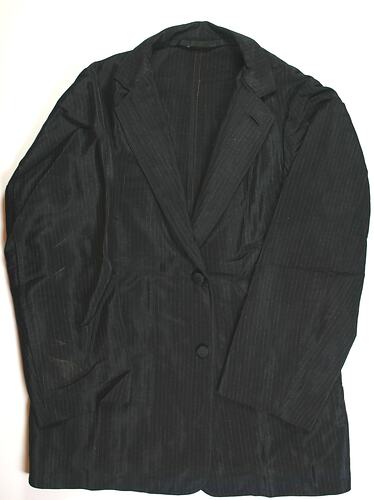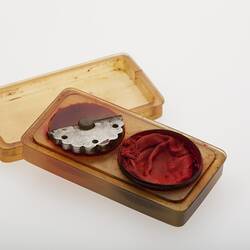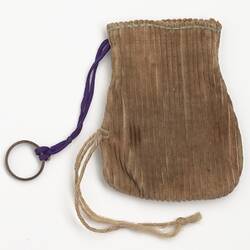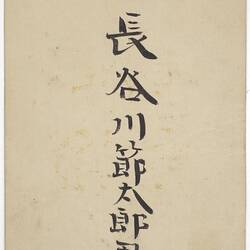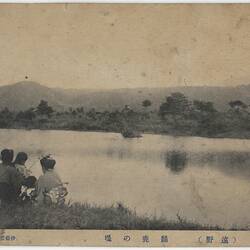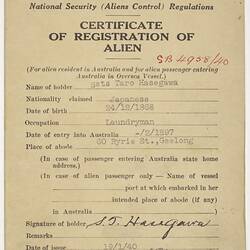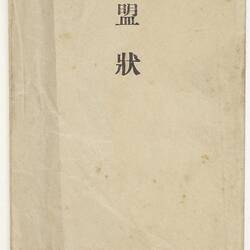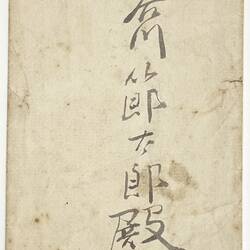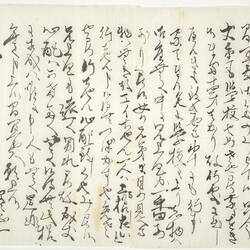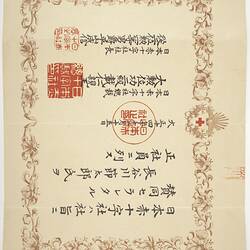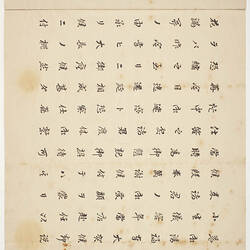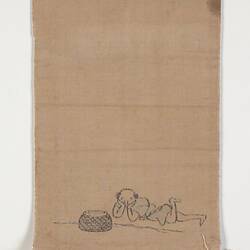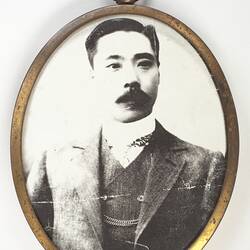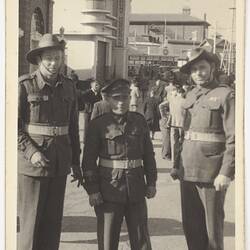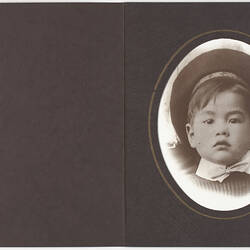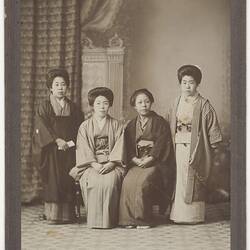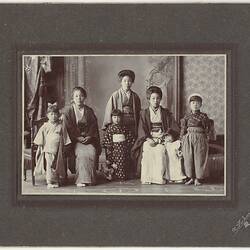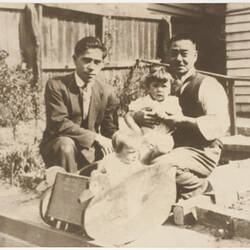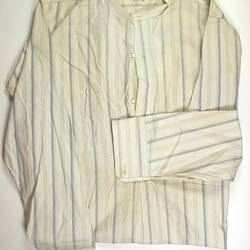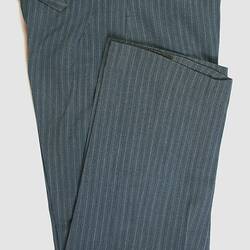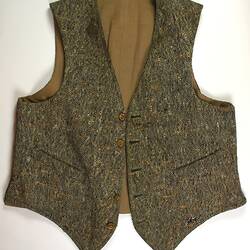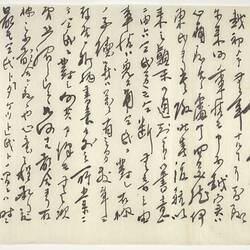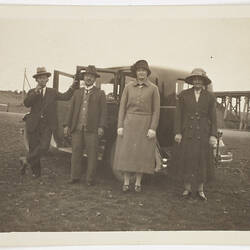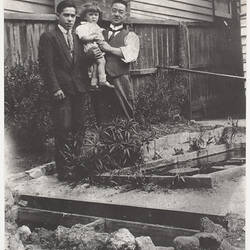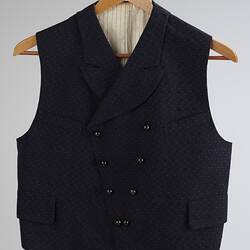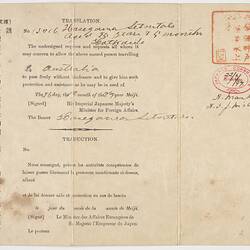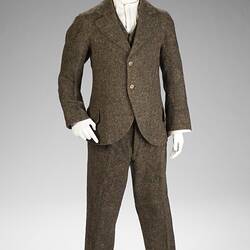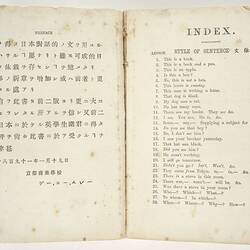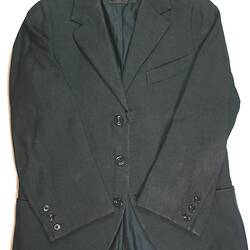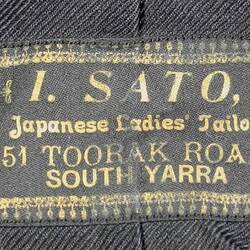Summary
Black and white pinstripe jacket, part of a collection of suits, jackets and trousers made by Ichizo Sato, a Japanese tailor in South Yarra, Melbourne, circa 1910. It is not well-made, however, and may not have been made by Sato, whose tailoring was of high quality. The jacket is believed to have been used by Japanese immigrant Setsutaro Hasegawa circa 1910-1952, but the shoulders are much narrower than his other jackets, except HT 24580, and the sleeves are shorter.
Setsutaro migrated to Australia from Japan in 1897 at the age of 26, just four years before the introduction of the Immigration Restriction Act which severely limited migration to Australia from countries in Asia. He established a laundry business in Geelong and by 1911 he had married an Australian-born woman and had three children.
In 1941 Setsutaro was arrested as an enemy alien and sent to Tatura internment camp in northern Victoria. Released early in 1943 due to his age and poor health, unlike most Japanese interns he was not deported to Japan after the War. Setsutaro remained in Geelong for the rest of his life and died in 1952.
Ichizo Sato was arrested and interned in 1942. Although he had arrived in 1901, been married for over 20 years to Eva Elizabeth Chue, an Australian of Chinese heritage, he was deported to Japan in 1946.?
Physical Description
Black with white pinstripe jacket, unlined and single breasted with lapels. The jacket has two fabric covered black buttons down the front and one button hole on one of its lapels. There are two pockets on the jacket's front.
Significance
The Hasegawa collection enables the exploration of a number of important historical themes relating to migration, working life, and wartime internment in Victoria. Late nineteenth century and early to mid twentieth century Japanese migration and settlement experiences are little represented in the museum's collections and this collection of clothing, documents, personal items and photographs helps to redress.
More Information
-
Collecting Areas
-
Acquisition Information
Donation from Andrew Hasegawa, 08 Oct 2009
-
Maker (Possible)
I. Sato Tailor, 97 Toorak Road, South Yarra, Greater Melbourne, Victoria, Australia, 1910
-
User
-
Inscriptions
Black buttons are stamped on the back with: 'Made*Beaver*German'.
-
Classification
-
Category
-
Discipline
-
Type of item
-
Overall Dimensions
480 mm (Length), 460 mm (Width), 690 mm (Height)
length (shoulder to cuff); width (waist to waist); height (collar to tail).
-
Keywords
Clothing, Clothing Trade, Internment Camps, Jackets, Japanese Communities, Japanese Immigration, Tailoring, White Australia Policy, World War II, 1939-1945
